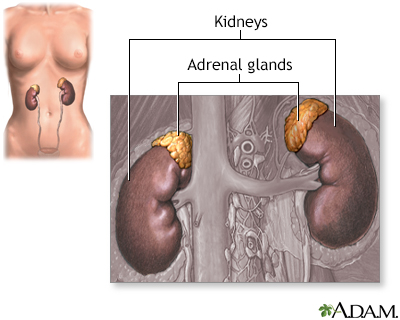Understanding Congenital Adrenal Hyperplasia
Congenital Adrenal Hyperplasia (CAH) is an intriguing and complex genetic disorder affecting adrenal gland function. Caused by enzyme deficiencies, this condition disrupts the production of essential hormones, ultimately leading to various health challenges. In our detailed article, we will explore what CAH is, its types, symptoms, diagnosis, and management strategies, providing you with a comprehensive understanding of this condition.

Unpacking the Basics of CAH
At its core, Congenital Adrenal Hyperplasia is primarily due to genetic mutations leading to the inadequate production of cortisol and aldosterone hormones. This imbalance can trigger a cascade of physiological changes, making it crucial to understand the distinct forms of CAH, such as:
- Classic CAH: Presents in early childhood with severe symptoms.
- Non-classic CAH: A milder form that may remain undiagnosed for years.
- Salt-wasting CAH: Characterized by life-threatening adrenal crises.
Recognizing Symptoms and Diagnosis
The symptoms of CAH can vary widely depending on the type and severity of the condition. Those affected may experience:
- Adrenal Crisis: A potentially life-threatening condition requiring immediate medical attention.
- Sexual Ambiguity: Particularly in females, presenting at birth.
- Growth Issues: Including early or delayed puberty.
Diagnosing CAH involves a combination of clinical evaluation and laboratory tests, which can provide critical insights into adrenal function. Early diagnosis is key to managing the condition effectively and improving quality of life.
Management and Treatment Options
Managing Congenital Adrenal Hyperplasia involves a multifaceted approach focused on hormone replacement therapy and regular monitoring. Treatment benefits include:
- Hormonal Balance: Corrective therapies can restore hormonal levels to normal ranges.
- Improved Growth and Development: Timely interventions can positively impact physical growth.
- Enhanced Quality of Life: With proper management, individuals can lead fulfilling lives.
Additionally, comprehensive care often includes counseling and support services that address emotional and psychological needs, particularly for affected families.
The Road Ahead: Living with CAH
Living with Congenital Adrenal Hyperplasia may seem daunting, but with proper education, vigilant management, and support from healthcare providers and family, individuals can flourish. Our article not only sheds light on the intricacies of CAH but also offers practical advice for navigating daily challenges.
Join us as we delve deeper into this captivating subject and uncover how advancements in medicine are continuously evolving to improve outcomes for those living with CAH. Knowledge is power, and by understanding Congenital Adrenal Hyperplasia, we take a pivotal step towards a healthier future.
